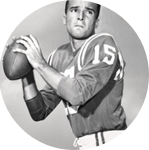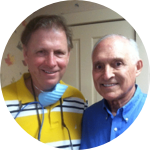About This Project
Approximately 18 million American adults have sleep apnea. According to the National Highway Traffic and Safety Administration (NHTSA) 100,000 accidents and 1500 traffic fatalities per year are related to drowsy driving. Sleep disorders add approximately $16 billion annually to the cost of health care in the U.S. The latest word on ABC news is that 9 million Americans admit to taking a sleeping drug. Older adults (65+) taking sleeping pills in a French study reported that they were 50% more likely to develop dementia over a 15 year period.Ask the Scientists
Join The DiscussionWhat is the context of this research?
The answer to our central question will determine the fate of a large percentage of mankind's sleeping habits. There are millions of people dependent on potent sleeping pills such as Lunesta, Ambien, and benzodiazepines. However, their directions for use limit time and dosage to preserve their effectiveness and prevent addiction. Is this the permanent fate of those who can't sleep?
What is the significance of this project?
Long term use of prescription sleeping agents can lead to physical dependence, tolerance and a ultimately severe withdrawal symptoms. None of these problems have been solved by the pharmaceutical industry. First, because of the lack of substitute drugs without those effects and second, because of the tremendous disruptive effect on the pharmaceutical company's bottom line. Even though, sleep apnea has been addressed and to a certain extent eliminated by breathing machines and oral appliances primary insomnia has not been solved.
Dr. Cuozzo has been working on this research for 20+ years and has been told by sleep center doctors,"my people like the pills."So, the pattern goes on and they continue to distribute drugs to their patients. Some with disastrous effects.
What are the goals of the project?
Our funds will be used to purchase materials, build the appliances and for out-of-area patients, pay local dentists to take oral impressions. Of note is one ingredient, 1.25 pennyweight of pure 22k gold, located on the tip of the tooth contact point of the retainer like appliance. (approx. $50.00)Each appliance will be approximately $500.00 each, (labor and materials) which is reasonable considering modern dental fees. We will try very hard to keep lab costs down not with cheap materials but our own lab labor. Shipping and packing will be extra. We will supply all printed instructions very inexpensively. There is an $1880.00 fee payable to the Patent office for the eighth year of its use due very soon.
Since this is an acoustic appliance delivering a form of music-like noise in the mouth it is similar to an earphone in the ear with a gold tip. It is not a medical device that delivers an electrical charge to the patient. (Medtronic Engineer Evaluation)
Budget
Our first priority will be to build acoustic retainers for 10 people with primary insomnia. At an estimated cost of $500.00 per retainer, the total will be $5000.00. We must also include impressions and casts from other dentists for patients that are unable to come to our offices. I would assume that number would be about one-half or 5 patients. Tentatively this would add $150.00 x 5 = $750.00. Our first stretch goal must also include $1880.00 that is due to the US Patent Office for the eighth year continuation fee. Bookkeeping and data evaluation will be crucial, each night for each patient. The night to night records will be recorded by each patient on a form with pertinent questions. Therefore bookeeping fees for one clerk at $15.00/hour for 40 hour week will be $600.00/wk. I include no salaries for either researcher.
The research should take two weeks since all of the patients will have drug dependencies, and in previous experience it takes that long for significant results. We will not take patients off of their drugs immediately, if at all...not wanting to precipitate a health crises. We will have the supervision of each patient's family physician or one we appoint. We will supply no drugs. The patients will sleep in their own beds so no cost is incurred with a sleep clinic. Since there has never been a side effect with 4 previous patients (relatives) for two years, we expect none. The patients will all have our cell phone numbers for any questions. We will take no single people over 65 years.
Endorsed by
Meet the Team
Team Bio
Edward E. Baker, D.D.S. graduated from Lafayette College and was signed by the New York Giants to play quarterback in 1970. He spent four years in the NFL, playing also for the Houston Oilers and the New York Jets.He attended the University of Tennessee College of Dentistry, graduating second in his class. Elected to OKU, R. Doggett Dean Honorary Society. Dr. Baker was selected for a one-year residency program at John F. Kennedy Medical Center in N.J., training in anesthesia, pathology, and surgery. He is a member of the American Dental Association, Academy of Gen. Dentistry, and American Acad. of Implant Dentistry. He does dental missions in South America.
Dr. John Cuozzo attended Georgetown in Wash. DC, received a DDS from University of Pennsylvania, School of Dentistry and an MS from Loyola Grad. School of Dentistry in Chicago. He practiced orthodontics in N.J. for over 30 years. He has been a member of the ADA and AAO and N.J. Acad. of Medicine and has written articles.
Edward E. Baker
Edward E. Baker, D.D.S., a native of the Caldwell, New Jersey area, has been in private dental practice since 1976. He graduated from Lafayette College in Easton, Pennsylvania, and was signed by the New York Giants to play quarterback in 1970. He spent four years in the NFL, playing also for the Houston Oilers and the New York Jets. He attended the University of Tennessee College of Dentistry, graduating second in his class. Elected to OKU, R. Doggett Dean Honorary Society, Mosby Book Award.Then Dr. Baker was one of two dentists selected from a pool of 120 applicants for a coveted one-year residency program at John F. Kennedy Medical Center in Edison, New Jersey, where he received training in anesthesia, pathology, and surgery. He is a member of the American Dental Association, Academy of General Dentistry, and American Academy of Implant Dentistryl. An avid fly fisherman, Dr. Baker has traveled to some of the most remote wilderness areas of North America to pursue his hobby. He also enjoys doing dental missions work in Central and South America.
Lab Notes
Nothing posted yet.
Additional Information
Primary insomnia is defined as a difficulty falling asleep, or staying asleep in the absence of another condition.There have been many attempts to alleviate this condition but none so simple and non-invasive than ours has come along. It has been backed up by years of research on the largest nerve in the face, the trigeminal. If you placed an ear-bud in your ear from an MP3 player it would transmit sound via the acoustic apparatus and acoustic nerve running from the ear to the brain. If you place the same ear-bud against a tooth it will cause the tooth to vibrate from the sound waves entering the crystals of the tooth enamel and dentin. The trigeminal nerve will pick up these harmonic vibrations and transmit them to the brain as the acoustic nerve also does for the ear, however the difference is that the trigeminal passes right by the sleep center, like a train in the night, and shares some of the vibrations in the form of nerve impulses with the sleep center. In our work this sharing of signals has a peaceful and relaxing effect on the person and tends to help them to fall asleep. It doesn't put them to sleep. Only the body can do that, but it is like biofeedback and relaxing mood music in that its gentle caressing of the mind sings a lullaby to the important parts in the brain.
Sanjay Gupta MD of CNN fame was quoted as saying "People who take sleeping pills and drink a couple of glasses of wine are playing Russian roulette." The main problem with sleeping pills is that with constant use over a long period of time a person will develop a tolerance to them. I personally have had patients who have taken two sleeping pills a night for about a year and have gone from 6 hours of sleep initially to 2 hours sleep at the end of that year. This leads to despair and worry about ever being able to sleep normally again.An estimated 70 million people in the United States suffer from sleep problems. More than 50 percent of them have a chronic sleep disorder. All of us know someone who falls into these categories.
Project Backers
- 2Backers
- 1%Funded
- $50Total Donations
- $25.00Average Donation


